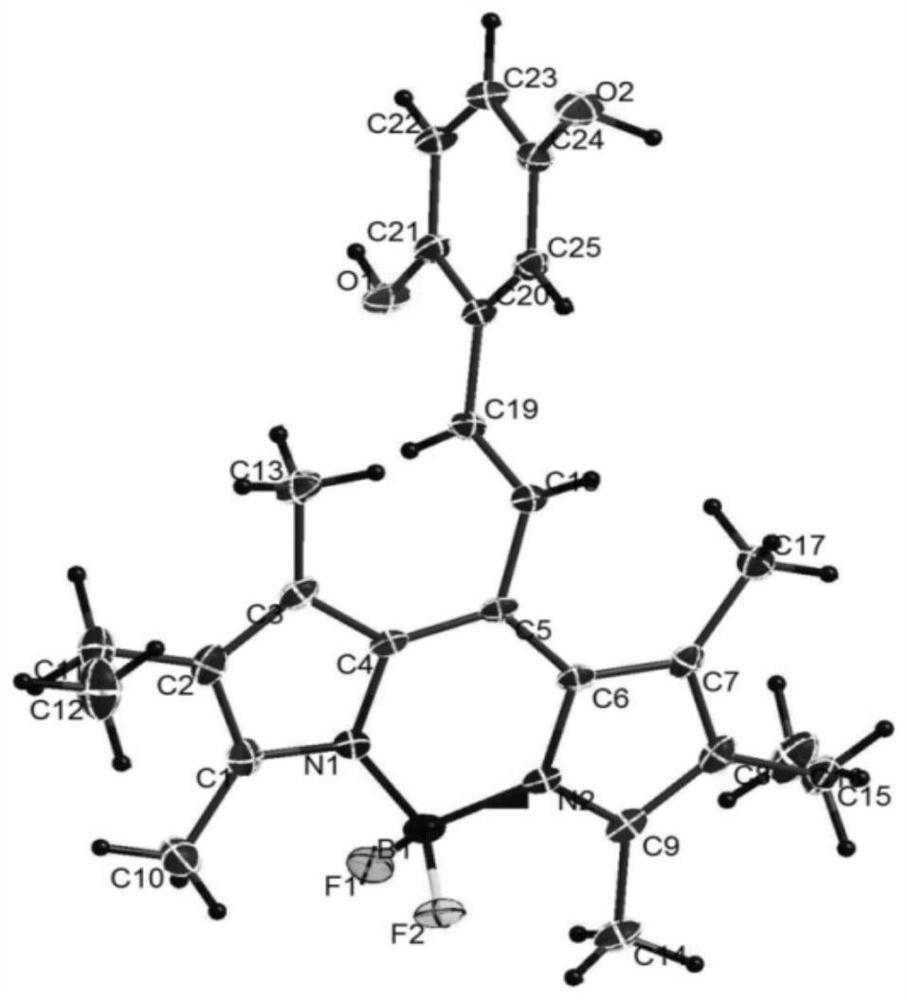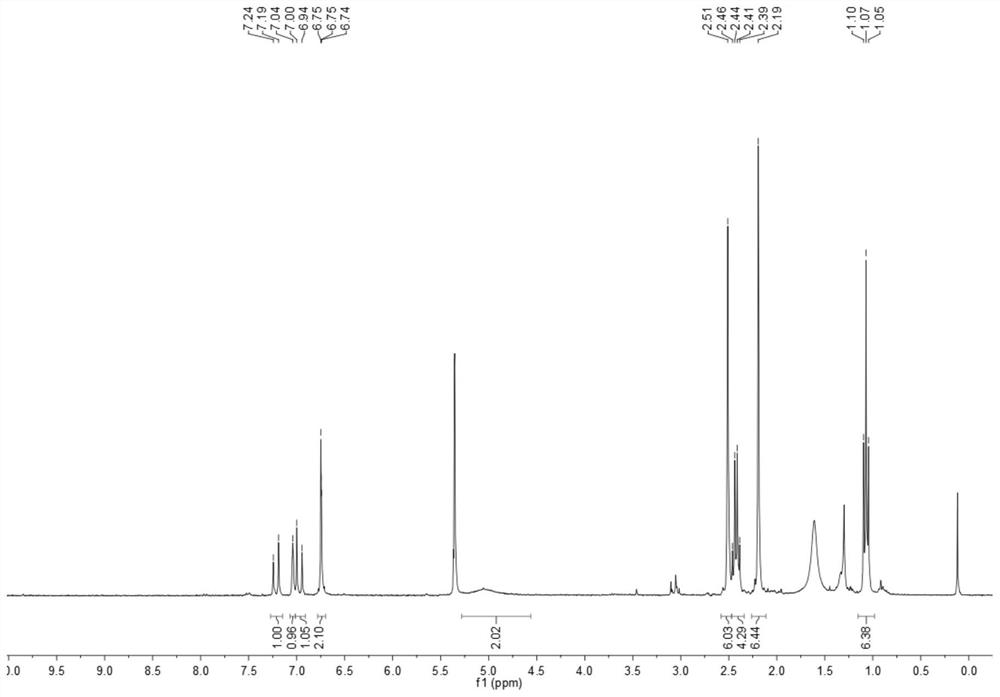Boron dipyrromethene fluorescent probe, preparation method and application thereof in viscosity detection
A fluoroboron dipyrrole and fluorescent probe technology is applied in the field of analytical chemistry to achieve the effects of good biocompatibility, simple preparation and wide range
- Summary
- Abstract
- Description
- Claims
- Application Information
AI Technical Summary
Problems solved by technology
Method used
Image
Examples
Embodiment 1
[0023] Synthesis of fluorescent probes
[0024] Compound B-1 used in the present invention is prepared by a conventional method, and the specific preparation process refers to the document Dalton Transactions, 48(23), 8488-8501; 2019.
[0025] The synthetic chemical reaction formula of fluorescent probe of the present invention is:
[0026]
[0027] In a round bottom flask equipped with a distillation dehydration device, add 2,5-dihydroxybenzaldehyde (65mg, 0.47mmol), glacial acetic acid (0.5mL), piperidine (0.4mL) and compound B-1 (136mg, 0.43mmol), the mixture was dissolved in absolute ethanol (15mL), and then refluxed for 6 hours under the protection of argon. After the reaction was complete, the solvent was removed by rotary evaporation, and the residue was extracted with 100 mL of ethyl acetate, washed successively with saturated brine (30 mL×3) and ultrapure water (30 mL×3). The resulting organic phase was dried over anhydrous sodium sulfate, then filtered and conce...
Embodiment 2
[0032] Fluorometric determination of viscosity
[0033] Dissolve the BV-1 probe in absolute ethanol to give a concentration of 1 x 10 -3 M stock solution, and then prepare different volume ratios of PBS 7.4 buffer and glycerol mixture (100:0, 99:1, 95:5, 90:10, 80:20, 70:30, 60:40, 50:50 , 20:80, 1:99) as a solvent. Before adding BV-1 stock solution (10 μL each time) to solutions (2 mL) with different ratios of water and glycerol, use a viscometer as a control to measure the viscosity of the solution. The resulting solution of BV-1 was sonicated in an ultrasonic cleaner for 5 minutes to eliminate air bubbles. Then, under the constant temperature condition of 25°C, use 480nm excitation wavelength and 500nm / min scan rate to record the fluorescence spectrum in the range of 500-700nm to measure the solution, such as Figure 4 shown. For the test method of other species, the fluorescent probe is dissolved in PBS 7.4 buffer, and then the species to be tested is added to make the...
Embodiment 3
[0035] cell imaging
[0036] First, A549 cells were cultivated in DMEM alkaline medium at 37°C and in a humidified environment of 5% CO2 (The First Affiliated Hospital of Anhui Medical University). Subsequently, BV-1 (5 μM) was added to the culture medium, the cells were incubated for 30 min, washed three times with phosphate buffered saline (PBS), and then imaged with a fluorescent confocal microscope. Firstly, the localization characteristics of the fluorescent probes in the cells were studied, and the above-mentioned fluorescent probes were incubated with the mitochondrial localization dye Mito-Tracker Green (Thermo Fisher), and the coincidence coefficient of the fluorescent probes and the dyes was investigated. Such as Figure 7 As shown, the region where the probe is located in the cell can well overlap with the dye, indicating that the probe can accurately locate the position of mitochondria in the cell. In order to evaluate the ability of BV-1 to detect the viscosity ...
PUM
 Login to View More
Login to View More Abstract
Description
Claims
Application Information
 Login to View More
Login to View More - R&D
- Intellectual Property
- Life Sciences
- Materials
- Tech Scout
- Unparalleled Data Quality
- Higher Quality Content
- 60% Fewer Hallucinations
Browse by: Latest US Patents, China's latest patents, Technical Efficacy Thesaurus, Application Domain, Technology Topic, Popular Technical Reports.
© 2025 PatSnap. All rights reserved.Legal|Privacy policy|Modern Slavery Act Transparency Statement|Sitemap|About US| Contact US: help@patsnap.com



